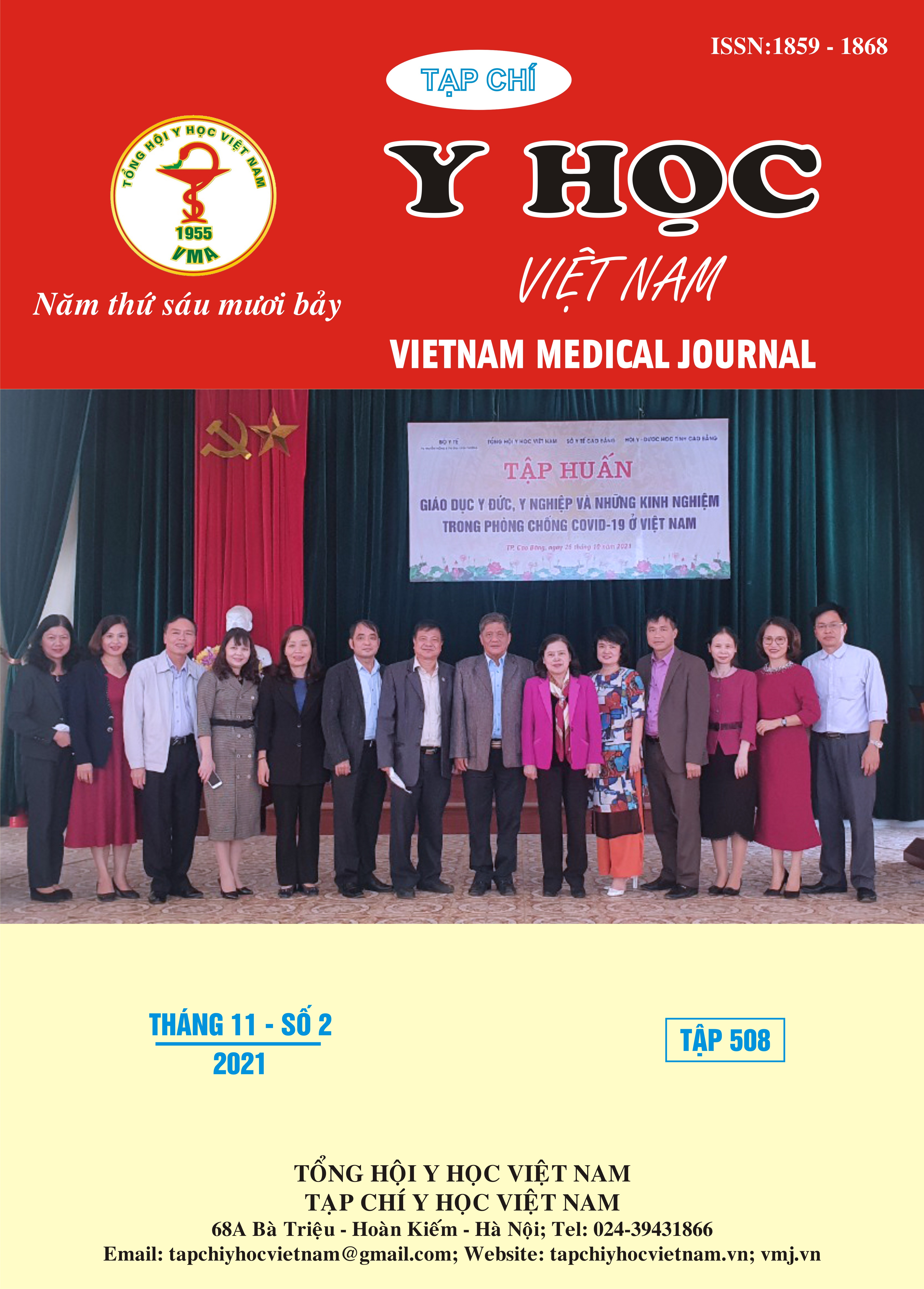SYSTEMATIC REVIEW AND META - ANALYSIS OF THE COST - EFFECTIVENESS OF OMALIZUMAB IN THE TREATMENT FOR ASTHMA
Main Article Content
Abstract
Cost-effectiveness analyses of interventions in the treatment for asthma have been performed in many countries around the world, including omalizumab. Systematic review and meta – analysis of the current state of the literature on the cost-effectiveness of omalizumab in the treatment for asthma has been conducted according to PRISMA guidelines based on database sources Pubmed, Cochrane and Embase with appropriate selection and exclusion criteria and assess quality of studies according to CHEERS. The systematic review and meta-analysis were performed through the ICER/QALY index converted to US Dollars (USD) 2020 based on the consumer price index (CPI). With 212 studies found based on search keywords, after screening according to selection and exclusion criteria, 06 studies were included in the meta - analysis. According to the CHEERS checklist, the quality of the studies ranging from 17 to 22 points with 60% good quality studies. This systematic review noted a relatively large variation in ICER/QALY between studies, ranging from $11,769/QALY to $897,559/QALY. In patients with uncontrolled severe persistent allergic asthma, particularly with corticosteroids, add-on therapy with omalizumab may be considered cost-effective when compared with standard therapy. The results of meta - analysis showed that ICER/QALY of add-on therapy with omalizumab compared with standard therapy resulted in $59.052/QALY (95% confidence interval: $34,457 - $83,648/QALY; p < 0.01). The add-on therapy with omalizumab may be considered cost-effective when compared with standard therapy in severe asthma.
Article Details
Keywords
Cost-effectiveness, asthma, omalizumab, systematic review
References
2. Campbell J. D., Spackman D. E., Sullivan S. D. (2010), "The costs and consequences of omalizumab in uncontrolled asthma from a USA payer perspective", Allergy. 65(9), pp. 1141-1148.
3. Canonica G. W., Colombo G. L., Rogliani P. et al. (2020), "Omalizumab for severe allergic asthma treatment in Italy: A cost-effectiveness analysis from proxima study", Risk Management and Healthcare Policy. 13, pp. 43-53.
4. Dal Negro R. W., Tognella S., Pradelli L. (2012), "A 36-Month study on the costutility of add-on omalizumab in persistent difficult-to-treat atopic asthma in Italy", Journal of Asthma. 49(8), pp. 843-848.
5. Dewilde S., Turk F., Tambour M. et al. (2006), "The economic value of anti-IgE in severe persistent, IgE-mediated (allergic) asthma patients: adaptation of INNOVATE to Sweden", Curr Med Res Opin. 22(9), pp. 1765-1776.
6. Faria R., McKenna C., Palmer S. (2014), "Optimizing the position and use of omalizumab for severe persistent allergic asthma using cost-effectiveness analysis", Value Health. 17(8), pp. 772-782.
7. Global Initiative for Asthma (2014), "GINA Burden report", GINA, pp. 1-5.
8. Global Initiative for Asthma (2020), "Global strategy for asthma management and prevention: Socioeconomics", GINA, pp. 47-152.
9. Levy A. N., García A Ruiz A. J., García-Agua Soler N. et al. (2015), "Cost-effectiveness of omalizumab in severe persistent asthma in Spain: A real-life perspective", Journal of Asthma. 52(2), pp. 205-210.
10. Martínez-Moragón E., Climent M., Chiner E. et al. (2019), "Effectiveness and pharmacoeconomic analysis of the treatment of severe asthma with omalizumab in clinical practice", Farmacia Hospitalaria. 43(3), pp. 101-109.
11. Morishima T., Ikai H., Imanaka Y. (2013), "Cost-Effectiveness Analysis of Omalizumab for the Treatment of Severe Asthma in Japan and the Value of Responder Prediction Methods Based on a Multinational Trial", Value Health Reg Issues. 2(1), pp. 29-36.
12. Suzuki C., Lopes da Silva N., Kumar P. et al. (2017), "Cost-effectiveness of omalizumab add-on to standard-of-care therapy in patients with uncontrolled severe allergic asthma in a Brazilian healthcare setting", J Med Econ. 20(8), pp. 832-839.
13. The World Bank (2020), Consumer price index (2010=100), accessed 18-06-2021, from https://data.worldbank.org/indicator/FP.CPI.TOTL?locations=US.
14. van Nooten F., Stern S., Braunstahl G. J. et al. (2013), "Cost-effectiveness of omalizumab for uncontrolled allergic asthma in the Netherlands", J Med Econ. 16(3), pp. 342-348.
15. Wu A. C., Paltiel A. D., Kuntz K. M. et al. (2007), "Cost-effectiveness of omalizumab in adults with severe asthma: results from the Asthma Policy Model", J Allergy Clin Immunol. 120(5), pp. 1146-1152.
16. Zafari Z., Sadatsafavi M., Mark FitzGerald J. et al. (2018), "Cost-effectiveness of tiotropium versus omalizumab for uncontrolled allergic asthma in US", Cost Eff Resour Alloc. 16, p. 3.
17. Zafari Z., Sadatsafavi M., Marra C. et al. (2016), "Cost-Effectiveness of Bronchial Thermoplasty, Omalizumab, and Standard Therapy for Moderate-to-Severe Allergic Asthma", PLoS One, pp. 1-15.
18. Zhou H., Lu Y., Wu B. et al. (2020), "Cost-effectiveness of omalizumab for the treatment of inadequately controlled severe allergic asthma in Chinese children", J Asthma. 57(1), pp. 87-94.


